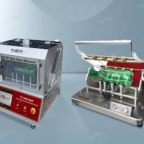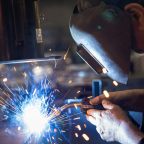
Commercial Kitchen Ventilation: Optimising Performance, Safety and Energy Efficiency
In the demanding environment of commercial kitchens, effective ventilation isn't merely a convenience—it's essential for operational success, regulatory compliance, and staff wellbeing. A properly designed and maintained kitchen ventilation system removes heat, steam, smoke, grease, and cooking odours whilst maintaining air quality and comfortable working conditions. At EnviroFWA, we understand that optimising these systems represents one of the most significant opportunities for enhancing kitchen performance whilst reducing operational costs.
The complexity of commercial kitchen ventilation means that many hospitality businesses struggle to achieve the ideal balance between performance, safety, and energy efficiency. This comprehensive guide explores how modern approaches to kitchen ventilation can transform your operations, protect your staff, and significantly reduce your energy consumption.
Understanding Commercial Kitchen Ventilation Systems
Before discussing optimisation strategies, it's essential to understand the fundamentals of kitchen ventilation systems and their critical components.
Key Components of Commercial Kitchen Ventilation
A complete commercial kitchen ventilation system typically includes:
- Extraction hoods (canopies) positioned above cooking equipment
- Ductwork to transport contaminated air
- Filters to capture grease and particulates
- Fans to move air through the system
- Make-up air systems to replace extracted air
- Controls to regulate system operation
- Fire suppression components integrated with the ventilation
Each element must work harmoniously to ensure efficient operation, with failures in any component potentially compromising the entire system's effectiveness.
Types of Commercial Kitchen Ventilation Systems
Different kitchen operations require different ventilation approaches:
Canopy Systems
Standard canopy systems are the most common, positioned directly above cooking equipment to capture rising heat and contaminants. These include:
- Wall-mounted canopies for equipment positioned against walls
- Island canopies for centrally located cooking equipment
- Condense canopies specifically designed for equipment producing significant steam
Ventilated Ceilings
In open-kitchen concepts or where aesthetics are paramount, ventilated ceiling systems distribute extraction points across the ceiling, creating a more open appearance whilst maintaining effective ventilation.
Demand-Controlled Ventilation (DCV)
Modern DCV systems adjust extraction rates based on cooking activity, using sensors to detect heat, steam, or cooking vapours and modulating fan speeds accordingly.
As explored in our article on extractor expertise, the selection of appropriate extraction equipment is critical to system performance and efficiency.
UK Regulations and Compliance Requirements
Commercial kitchen ventilation in the UK must comply with several regulatory frameworks:
Building Regulations
- Part F (Ventilation) - Sets requirements for adequate ventilation
- Part B (Fire Safety) - Covers fire protection in extraction systems
- Part L (Conservation of Fuel and Power) - Addresses energy efficiency requirements
Health and Safety Legislation
- Health and Safety at Work Act 1974 - General workplace safety requirements
- Workplace (Health, Safety and Welfare) Regulations 1992 - Specific ventilation provisions
- Control of Substances Hazardous to Health (COSHH) Regulations - Managing exposure to cooking fumes
Industry Standards
- DW/172 - Specification for Kitchen Ventilation Systems
- TR19® Grease - Guide to good practice for internal cleanliness of ventilation systems
- BESA Technical Bulletin TB/001 - Fire risk management in catering extract ventilation
Our TR19 grease extraction cleaning service ensures your system remains compliant with these critical standards.
Fire Safety Compliance
Fire risks in kitchen ventilation systems are particularly significant due to potential grease accumulation. Compliance requires:
- Regular cleaning to prevent grease build-up
- Proper installation of fire dampers at appropriate points
- Integration with fire detection and suppression systems
- Regular fire damper drop testing to ensure proper operation
Non-compliance with these regulations can result in serious consequences, including:
- Prohibition notices forcing kitchen closure
- Insurance policy invalidation
- Criminal prosecution in serious cases
- Civil liability for damages in the event of fire or health impacts
Performance Optimisation for Kitchen Ventilation
Maximising ventilation performance ensures a comfortable working environment, reduces cooking odour migration, and maintains food quality.
Canopy Design and Positioning Principles
The effectiveness of extraction begins with proper hood design and positioning:
- Overhang requirements - Canopies should extend beyond cooking equipment by at least 300mm on all exposed sides
- Installation height - Typically 2.0-2.1m from floor level to the canopy's lower edge
- Capture velocity - Sufficient velocity (typically 0.25-0.5 m/s) to ensure contaminants are drawn into the hood
- Equipment grouping - Organising similar equipment together improves extraction efficiency
Airflow Balancing
Proper balance between extraction and make-up air is critical:
- Extraction rates should be calculated based on cooking equipment type and usage
- Make-up air should be 85-90% of extracted air (slight negative pressure in kitchen)
- Air distribution should avoid creating drafts that disrupt capture efficiency
- Replacement air temperature should be conditioned to avoid staff discomfort
Our ventilation installation services ensure these principles are applied correctly for optimal system performance.
Common Performance Issues and Solutions
When kitchens experience ventilation problems, several common issues are typically responsible:
|
Issue |
Potential Causes |
Solutions |
|
Smoke or fume escape |
|
|
|
Excessive noise |
|
|
|
Poor temperature control |
|
|
|
Odour migration |
|
|
Our extractor fan repair and replacement service can address many of these issues with minimal disruption to your operations.
Energy Efficiency Strategies for Kitchen Ventilation
Kitchen ventilation typically accounts for 25-40% of a commercial kitchen's energy consumption. Implementing efficiency measures can significantly reduce operating costs.
Demand-Controlled Ventilation
Traditional kitchen ventilation systems operate at constant speeds regardless of cooking activity. Demand-controlled ventilation (DCV) represents the most significant opportunity for energy savings:
- Optical sensors detect smoke and adjust fan speeds accordingly
- Temperature sensors monitor cooking activity and modulate extraction rates
- Programmable controls allow scheduling based on operational hours
- Variable frequency drives (VFDs) enable precise fan speed control
DCV systems typically reduce fan energy consumption by 30-50% and also decrease conditioning costs for make-up air by extracting less air during periods of lower cooking activity.
Heat Recovery Opportunities
Commercial kitchen ventilation systems extract significant thermal energy that can be recaptured:
- Air-to-air heat exchangers transfer heat from extract air to incoming make-up air
- Heat pump recovery systems capture thermal energy for water heating
- Refrigeration heat recovery utilises waste heat from refrigeration systems for make-up air preheating
These systems can recover 50-70% of waste heat, significantly reducing heating costs, particularly in colder months.
High-Efficiency Components
Several component upgrades can enhance system efficiency:
- EC (electronically commutated) motors for fans, offering 25-30% greater efficiency
- Aerodynamic fan designs that reduce turbulence and energy consumption
- Low-pressure drop filters that maintain extraction efficiency with reduced resistance
- LED hood lighting consuming 75% less energy than conventional options
Combined with proper maintenance from our ventilation hygiene cleaning service, these upgrades can significantly reduce operating costs.
Energy Efficiency Case Study: Belfast Restaurant
A 120-seat restaurant in Belfast implemented several ventilation efficiency improvements with EnviroFWA's assistance:
- Installation of demand-controlled ventilation with optical and temperature sensors
- Upgrade to EC motor technology on extraction fans
- Implementation of basic heat recovery for make-up air preheating
- Establishment of regular planned maintenance
The results demonstrated the substantial impact of these measures:
- Fan energy consumption reduced by 42%
- Make-up air heating requirements decreased by 35%
- Overall kitchen HVAC costs reduced by approximately £7,200 annually
- Return on investment achieved within 18 months
- Improved kitchen working environment with more consistent temperatures
Maintenance Best Practices for Optimal Performance
Even the most efficiently designed ventilation system will degrade in performance and efficiency without proper maintenance.
Cleaning Requirements and Schedules
Grease accumulation in kitchen ventilation systems presents both efficiency and fire safety concerns:
Recommended Cleaning Frequencies
|
Kitchen Usage |
Canopy Filters |
Ductwork |
Fans and Components |
|
Light (2-6 hrs/day) |
Weekly |
Annually |
Bi-annually |
|
Moderate (6-12 hrs/day) |
Weekly |
Quarterly |
Quarterly |
|
Heavy (12-24 hrs/day) |
Daily-Weekly |
Monthly |
Quarterly |
Professional ventilation hygiene cleaning is essential for ductwork and components beyond daily filter maintenance.
Essential Maintenance Tasks
A comprehensive maintenance programme should include:
- Regular filter cleaning or replacement to maintain airflow and capture efficiency
- Grease removal from hood surfaces and collection points
- Fan inspection for proper operation and balance
- Belt tension verification on belt-driven systems
- Control system testing to ensure proper operation
- Ductwork inspection for cleanliness and integrity
- Fire safety system verification including fire damper testing
- Airflow measurement to confirm system performance
Our planned maintenance programmes ensure all these critical tasks are performed at appropriate intervals.
Signs Your Ventilation System Needs Attention
Several indicators suggest ventilation system issues requiring professional intervention:
- Visible smoke or fume escapes during cooking
- Excessive heat in the kitchen despite the ventilation operation
- Grease dripping from hoods or ductwork
- Unusual noises from fans or motors
- Odour complaints from dining areas or adjacent spaces
- Inconsistent airflow or "dead spots" in the kitchen
- Increased cooking odours on staff clothing
If you observe these signs, our reactive maintenance service can quickly diagnose and resolve issues before they impact your operations.
Modern Technology Innovations in Kitchen Ventilation
Recent technological advances offer new opportunities for ventilation optimisation:
UV-C Technology for Grease Management
Ultraviolet light systems installed within canopies break down grease molecules into smaller compounds:
- Reduces grease accumulation in ductwork by 70-80%
- Decreases cleaning frequency and associated costs
- Enhances fire safety through grease reduction
- Assists with odour control by neutralising cooking smells
Ventilated Ceilings with Integrated Systems
Modern ventilated ceiling systems integrate multiple functions:
- Air extraction and supply
- Lighting elements
- Acoustic treatment
- Fire suppression
- Integrated service distribution
These systems are particularly valuable in open kitchen designs where traditional canopies would disrupt the visual experience.
Smart Controls and Monitoring
Advanced control systems bring new capabilities to kitchen ventilation:
- Remote monitoring allowing off-site system oversight
- Predictive maintenance notifications based on performance metrics
- Energy consumption analytics identifying optimisation opportunities
- Automated reporting for compliance documentation
- Integration with building management systems for coordinated operation
These technologies enhance efficiency while reducing management burden.
Planning for New Installations or Upgrades
When planning new kitchen ventilation or upgrading existing systems, several key considerations should guide your approach:
System Design Principles
- Coordinate early with kitchen equipment specifications
- Future-proof capacity to accommodate potential menu or equipment changes
- Consider kitchen layout to optimise hood placement and airflow patterns
- Evaluate make-up air strategy carefully for comfort and efficiency
- Integrate with HVAC systems for coordinated operation
- Account for local conditions including climate and building configuration
Selecting the Right Partner
Choosing qualified professionals for design, installation, and maintenance is crucial:
- Verify experience specifically with commercial kitchen ventilation
- Ensure familiarity with relevant regulations and standards
- Confirm capabilities for commissioning and performance verification
- Establish ongoing maintenance support
- Check references from similar hospitality operations
EnviroFWA's expertise in air conditioning and ventilation installation ensures your project benefits from our comprehensive industry knowledge.
Return on Investment Considerations
When evaluating ventilation investments, consider all potential benefits:
- Direct energy cost reductions (fan operation and make-up air conditioning)
- Extended equipment life through proper environmental control
- Reduced cleaning and maintenance costs
- Staff productivity improvements from better working conditions
- Compliance cost avoidance
- Business interruption risk reduction
Properly designed and maintained ventilation typically delivers complete return on investment within 2-4 years while providing operational benefits throughout its service life.
The Strategic Value of Optimised Kitchen Ventilation
Commercial kitchen ventilation represents far more than a regulatory requirement—it's a critical operational system that impacts energy consumption, staff wellbeing, fire safety, and food quality. By implementing the strategies outlined in this guide, hospitality businesses can transform their ventilation systems from energy-consuming necessities into performance-enhancing assets.
At EnviroFWA, our integrated approach to kitchen ventilation encompasses design, installation, maintenance, and optimisation. From TR19 grease extraction cleaning to ventilation installation and extractor fan repair, our services ensure your kitchen ventilation system delivers optimal performance, safety, and efficiency.
Contact our team today to discuss how we can help optimise your commercial kitchen ventilation system, reducing costs while enhancing your kitchen operations.

















